There are two main types of strawberries that you can grow. Those are everbearing strawberries* and June-bearing strawberries. The difference between them is just what their names (mostly) imply—June-bearing strawberries ripen and are harvested in June, while everbearing strawberries will begin with a June harvest, but will continue to set fruit all summer long and into the fall.
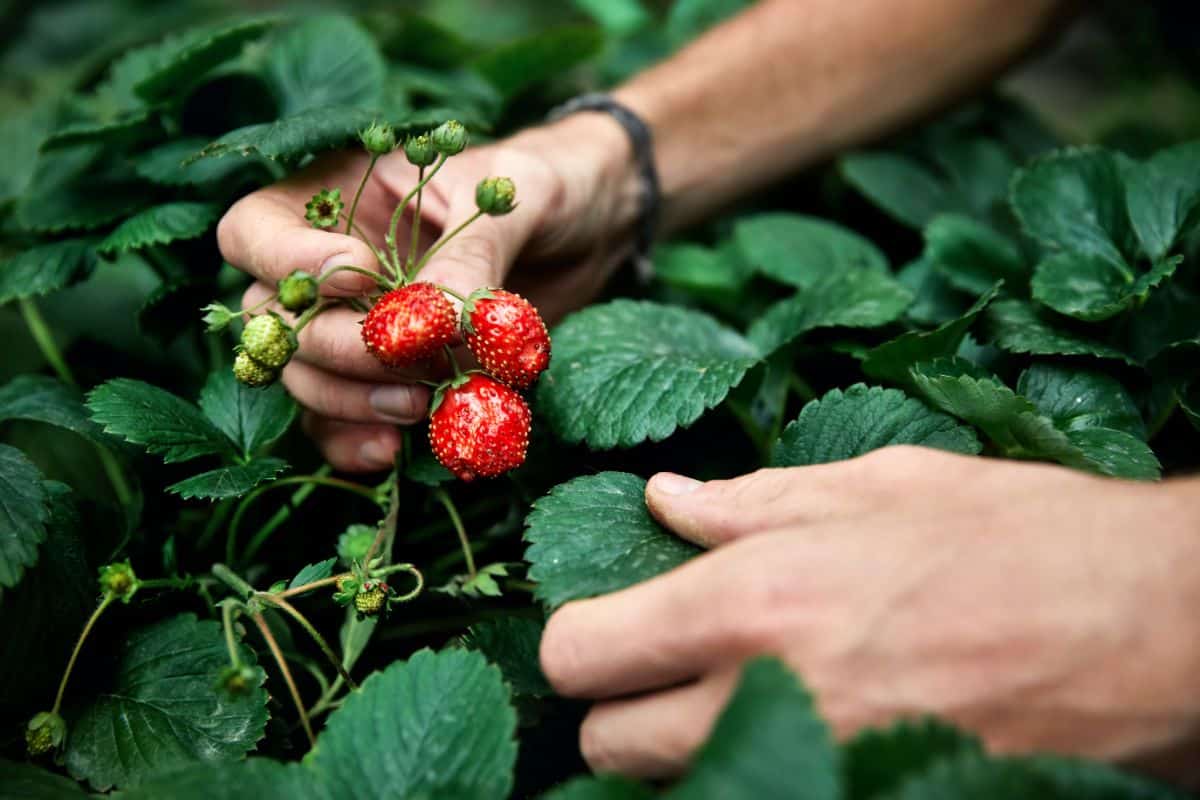
In some ways, this makes it sound as if everbearing strawberries are the clear winner—why grow June-bearing berries (which, let’s face it, are the most popular), when you could grow strawberries that produce all season long?
While there’s not necessarily a right or wrong answer to this question, there are some things to consider, and some differences, pros, and cons that might help you decide on which type is best for you.
*Some sources will consider day-neutral strawberry plants as separate from everbearing types. In truth, they are a third type of plant, but they are very close to everbearing and are, in essence, an everbearing strawberry. For this reason, many sources list day-neutral strawberries as everbearing, and the terms are used interchangeably. For the sake of this article, we will group these two types together.
Cons
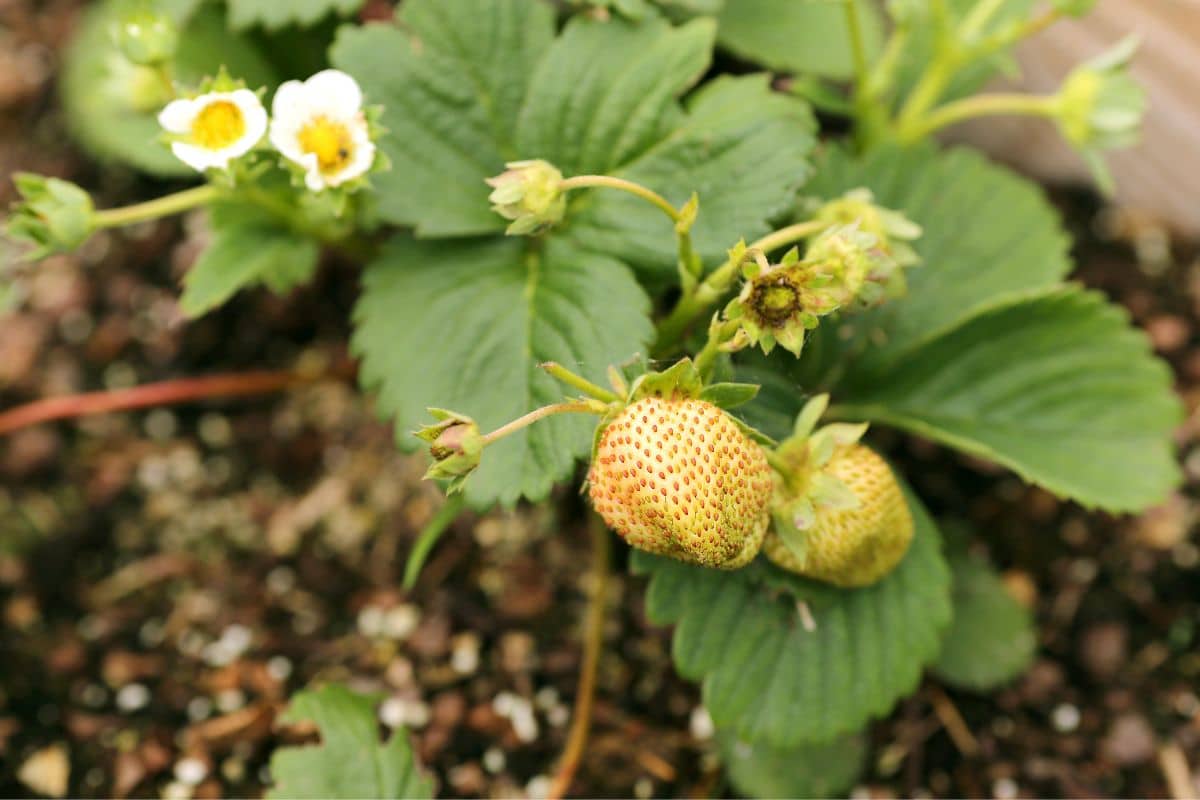
Let’s look at the drawbacks of everbearing strawberry plants first. Or at least, the things that may be drawbacks for some people—not all people would agree, since a lot of what you might view as “good” or “bad” will depend on what else you have going on in your life.
Here are some of the factors that might steer you away from growing everbearing strawberries:
- Smaller fruit than June bearing (but larger than wild strawberries, and there are several varieties that have good-sized berries)
- True alpine everbearing strawberries are usually very small (between wild berries and cultivated strawberry size—but there are not many of these varieties)
- Takes a long time to get to harvest maximum yield—harvest is stretched over an entire season
- Smaller “all at once” harvests than June bearing means smaller harvests for big preserving pushes
- Smaller berries take longer to process for preserving (more berries to add up to a quantity and more destemming, etc.)
- Don’t form matted rows like June-bearing plants with runners do
- Require a longer time commitment in terms of picking and harvesting the bed all summer
- Will need to give attention to harvesting the patch for the whole season, which can compete with pressures from other crops and vegetable gardens
- Stop bearing in high heat
- Not as well suited to hot climates
Pros
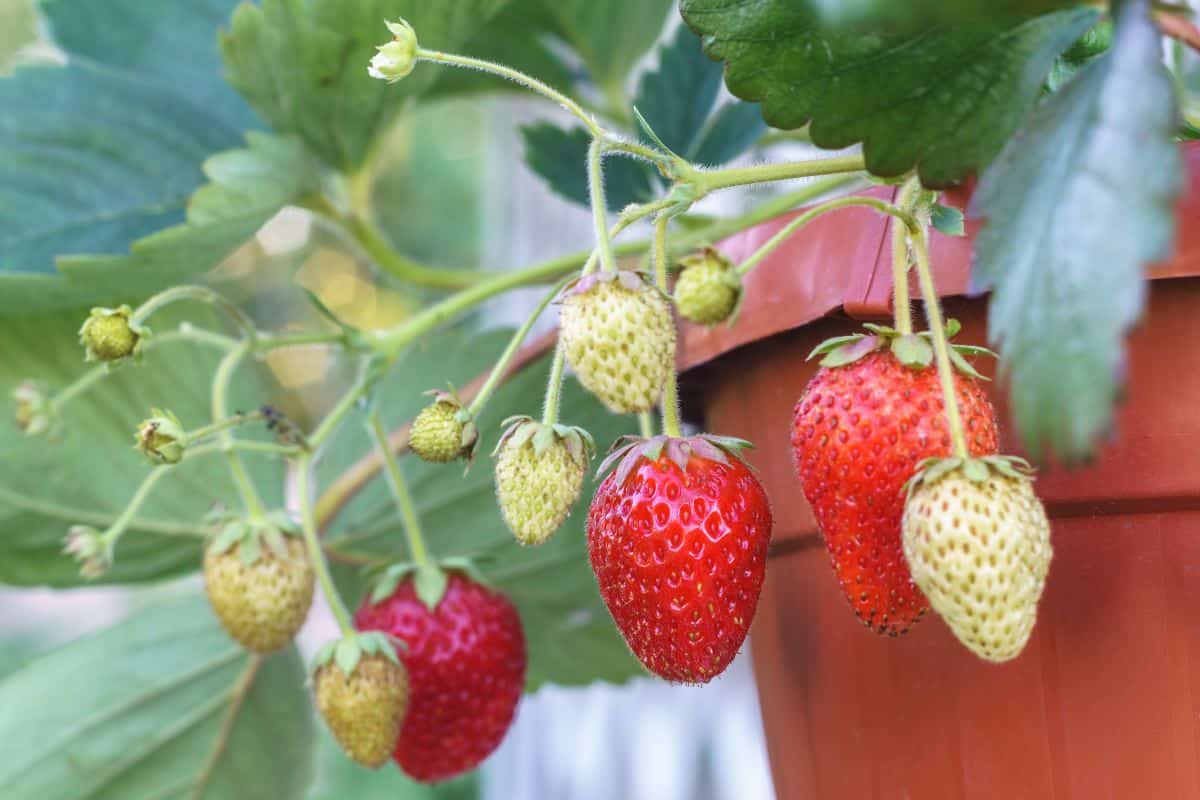
Rather than being like most lists that give you all the benefits of a thing and then slap them all down with a list of what’s bad about them, let’s flip things around and end on a positive note. We’ve seen some things that can be less than optimal when it comes to day-neutral and everbearing strawberries, so let’s see what’s great about them.
Here are some good reasons to grow everbearing strawberries:
- Long harvest period
- Harvest is stretched over an entire season
- Can be harvested in the first year of growing (typically, the June flowers are pinched, and those berries are not harvested in the first year [only], but the summer and fall flowers are left to set fruit and be harvested in the first year)
- Smaller, firmer berries may hold up better than June-bearing in freezing and preserving
- Often said to have better flavor and be sweeter (though this is also variety-dependent)
- May be better for cooler climates as they tend to be more cold- and winter-hardy (also check varieties for this feature)
- Good for growing in small spaces and still capable of yields of one quart per plant per season
- Make good container and hanging plants since they send few (if any) runners
- Equally good as plants grown in the ground
- Stay contained better [than June bearing] in row plantings
- Everbearing strawberry patches do not require renovation
- Less overall maintenance than June-bearing
- Better suited to cooler climates
- Repeated blossoming means they can overcome damage to blossoms and fruit set caused by late frosts
- Perhaps the biggest benefit of all—fresh strawberries to harvest and eat for months on end!
Pros that are Cons and Vice Versa
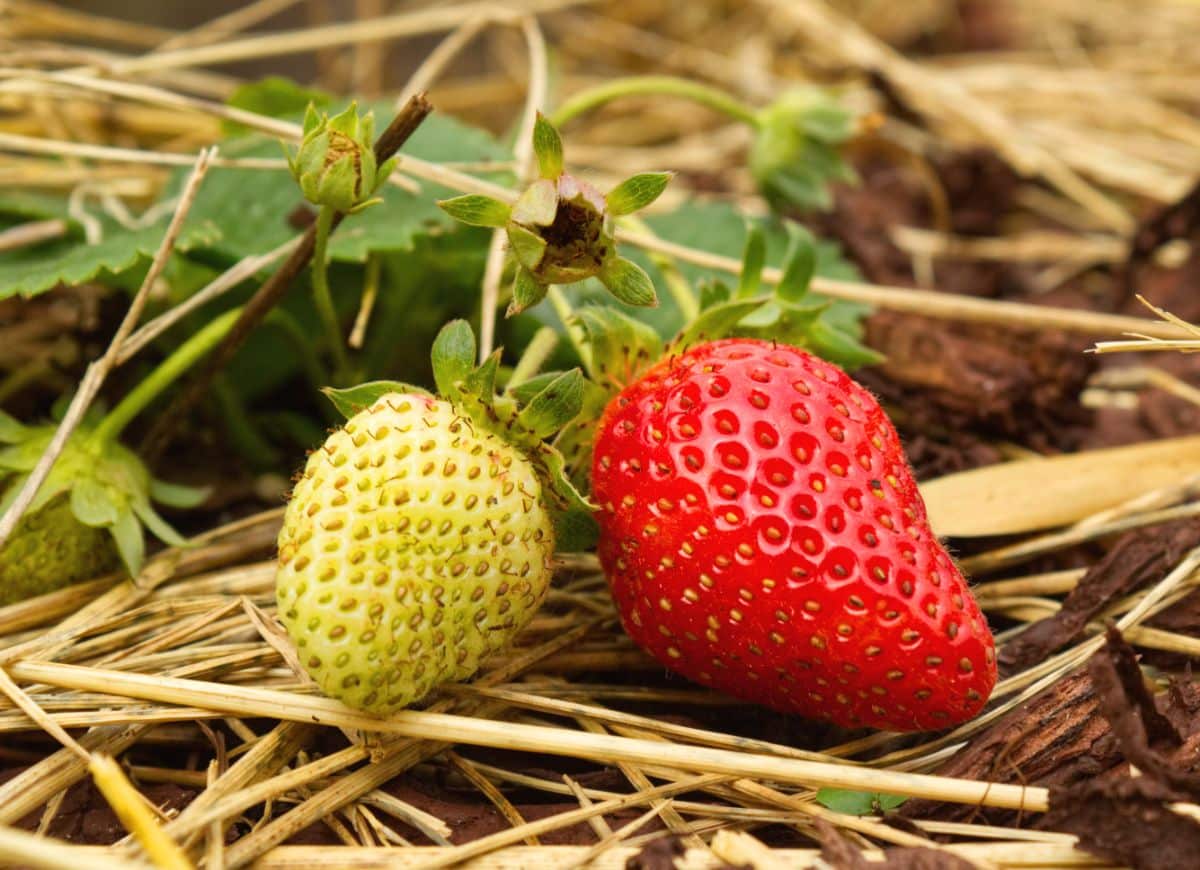
You may have noticed that some pros are also on the cons list. Namely, the fact that the harvest period for everbearing strawberries is stretched over an entire season. How can that be?
It’s simple. It really depends on how you like to harvest your strawberries, what you like to do with them, how much you need for your purposes, and when.
For example, if you like strawberries mostly for fresh eating, then everbearing types might be your best bet. It might be a stretch to say that you will have strawberries to harvest every day from June to October (or maybe even later in a mild climate or a mild year), but you can have harvests for most of this time.
Do note that this depends on a variety. The most common harvest pattern for everbearing strawberries is a large June flush, consistent smaller harvest throughout the summer, and a second large harvest in the fall. “Large” harvests for everbearing strawberries are sizable, but smaller than June-bearing harvests. Some varieties may not give a lot in the summer and may trend toward two large flushes instead.
The point is, it pays to do some research and choose your everbearing strawberry variety according to your time, use, preservation preference, and growing style.
These are some of our top advantages and disadvantages of growing everbearing strawberries. What are yours?


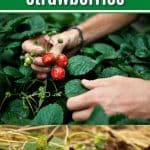
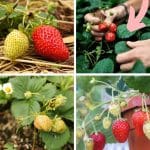
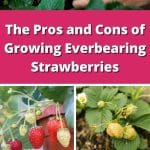

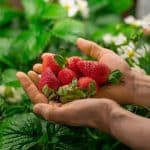


Bob Southwood says
The only complaint from the family about the everbearing strawberries is that they don’t seem sweet enough, that they seem to be tart. Is there anything that can be added to the soil to help with this issue. I am in N. Georgia where the soil is predominantly red clay. I have added compost to the soil before planting. Thanks Bob
Mary Ward says
Good soil can help, but really sweetness depends on two things: growing a variety known for sweetness, and picking when fully ripe.
Strawberries do not ripen off the vine and they start to convert sugar to starch soon after picking. It’s best to let them fully ripen on the plant, pick when completely red, and use as soon as possible.
Other than that, there are a few things you can do when you consume them to enhance sweetness.
You might find some pointers in this article:
https://strawberryplants.org/boost-sweetness-strawberries/#what-makes-the-best-soil-for-sweet-strawberries
Henry says
Very interesting and informative. Thank you